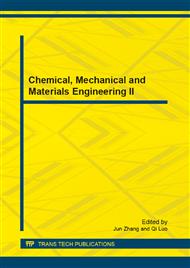p.399
p.404
p.409
p.414
p.419
p.427
p.435
p.440
p.444
New Methods to Evaluate Diesel Smoke from Inspection/Maintenance Vehicles Using Integration of Smoke Emissions over a Measurement Cycle of Snap-Acceleration Test at no Load
Abstract:
Each country regularly inspects smoke emissions from diesel vehicles. The most common method is a snap acceleration test at no load. Currently, the representative smoke value of a tested vehicle is decided by averaging three peak values which correspond to three consecutive measurement cycles. The biggest problem of the current method of determining the representative smoke of tested vehicles based on the averaging 3 consecutive peak values is that it varies enormously according to how the driver pushes the accelerator. In this study, new methods based on integration were researched to calculate representative smoke values from tested vehicles using the same data obtained by a snap acceleration test at no load. The smoke emissions for each measurement cycle were integrated with respect to time, and the average of the integrated values was obtained. Also, the smoke value of the acceleration range in each measurement cycle was integrated and the average was obtained. The representative value of smoke emissions was analyzed according to both the old and new calculation method. A total of 20 vehiclesof the same model with 2 liter diesel engineswere tested using snap acceleration at no load. It was found that the fluctuation of the representative smoke values of the tested vehicles was reduced when the average of the integrated values over either one measurement cycle or the acceleration range was used as the representative value.
Info:
Periodical:
Pages:
419-426
Citation:
Online since:
May 2013
Authors:
Price:
Сopyright:
© 2013 Trans Tech Publications Ltd. All Rights Reserved
Share:
Citation:


